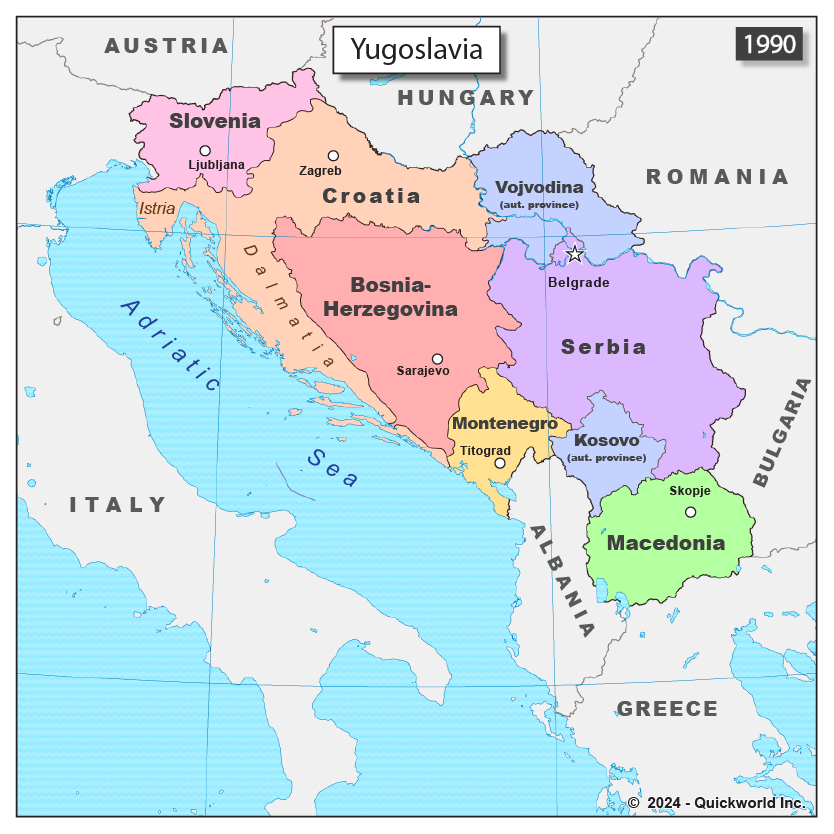Our "Former Countries" Series takes us to Yugoslavia, a country that existed, in one form or another, from the end of WW1 until the early 21st Century.
On this 1990 map, Yugoslavia is on the verge of implosion, in a way that is reminiscent of the former Soviet Union. The country was a federation of six ethnically Slavic republics: Macedonia, Serbia, Montenegro, Croatia, Bosnia-Herzegovina and Slovenia. However, except for the latter, none of those republics had an homogeneous population. In particular, many Serbs lived within the borders of Croatia and Bosnia, and there were many minorities of both Slavic and non-Slavic background. Serbia had two autonomous Provinces: Vojvodina in the North, which had a large Hungarian minority, and Kosovo in the South, which had an Albanian majority. There were also Romanians and Turks in the East.
The disintegration would come fast, with Slovenia, Croatia, Bosnia and Macedonia declaring independence in the early 1990s and a major ethnic war happening in Bosnia-Herzegovina between the Serb, Bosnian and Croatian factions.
Next came Kosovo at the end of the decade, where again, ethnic strife was rampant which led Nato and the UN to intervene. Finally, Montenegro and Serbia split in 2006 after a Montenegrin referendum on independence.
More on Yugoslavia
Yugoslavia in 1990


